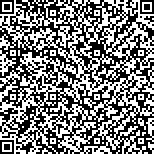本文已被:浏览 2089次 下载 2930次
Received:July 04, 2019 Revised:July 23, 2019
Received:July 04, 2019 Revised:July 23, 2019
中文摘要: 介绍了云计算,对任务调度在云计算中的地位做了分析,并由任务调度出发,对云计算任务调度算法的研究现状进行分类、梳理和总结.根据调度目标的不同,将算法分为单目标优化的任务调度算法和多目标的任务调度算法,对每类方法的代表性算法进行了分析介绍,并详细总结了每类方法的基本思想,对其优缺点做了分析、对比,并对改进方式进行了归纳.
Abstract:Cloud computing is one of the emerging industries based on the Internet for commercial calculation model. It provides a quick and easy and reliable access to network resources. Cloud computing is introduced. The task scheduling in cloud computing is analyzed, and the research status of cloud computing task scheduling algorithm are classified and summarized according to different scheduling goal. The task scheduling algorithm can be divided into single objective optimization algorithm and multi-objective task scheduling algorithm. The representative algorithms of each method are analyzed, and the advantages and disadvantages of each algorithm are compared and summarized in detail, and the way of improvement is also inducted.
keywords: cloud computing static scheduling dynamic scheduling biological inspiration swarm intelligence
文章编号: 中图分类号: 文献标志码:
基金项目:国家重点研发项目(2018YFB1308600,2018YFB1308602);国家自然科学基金(61272364);广东高校省级重大科研项目(201612008QX,2016KTSCX167,2017KTSCX207,2018KTSCX288);广东省学科建设专项资金(2013WYXM0122);广东省自然科学基金(2016A030313384);广东省大学生创新创业训练计划(201813177028,201813177046);深圳市科技计划(JCYJ20170303140803747);广东省大学生科技创新培育专项(pdjh2019b0581);智能多媒体技术重点实验室(201762005)
引用文本:
杨戈,赵鑫,黄静.面向云计算的任务调度算法综述.计算机系统应用,2020,29(3):11-19
YANG Ge,ZHAO Xin,HUANG Jing.Survey on Task Scheduling Algorithms for Cloud Computing.COMPUTER SYSTEMS APPLICATIONS,2020,29(3):11-19
杨戈,赵鑫,黄静.面向云计算的任务调度算法综述.计算机系统应用,2020,29(3):11-19
YANG Ge,ZHAO Xin,HUANG Jing.Survey on Task Scheduling Algorithms for Cloud Computing.COMPUTER SYSTEMS APPLICATIONS,2020,29(3):11-19


